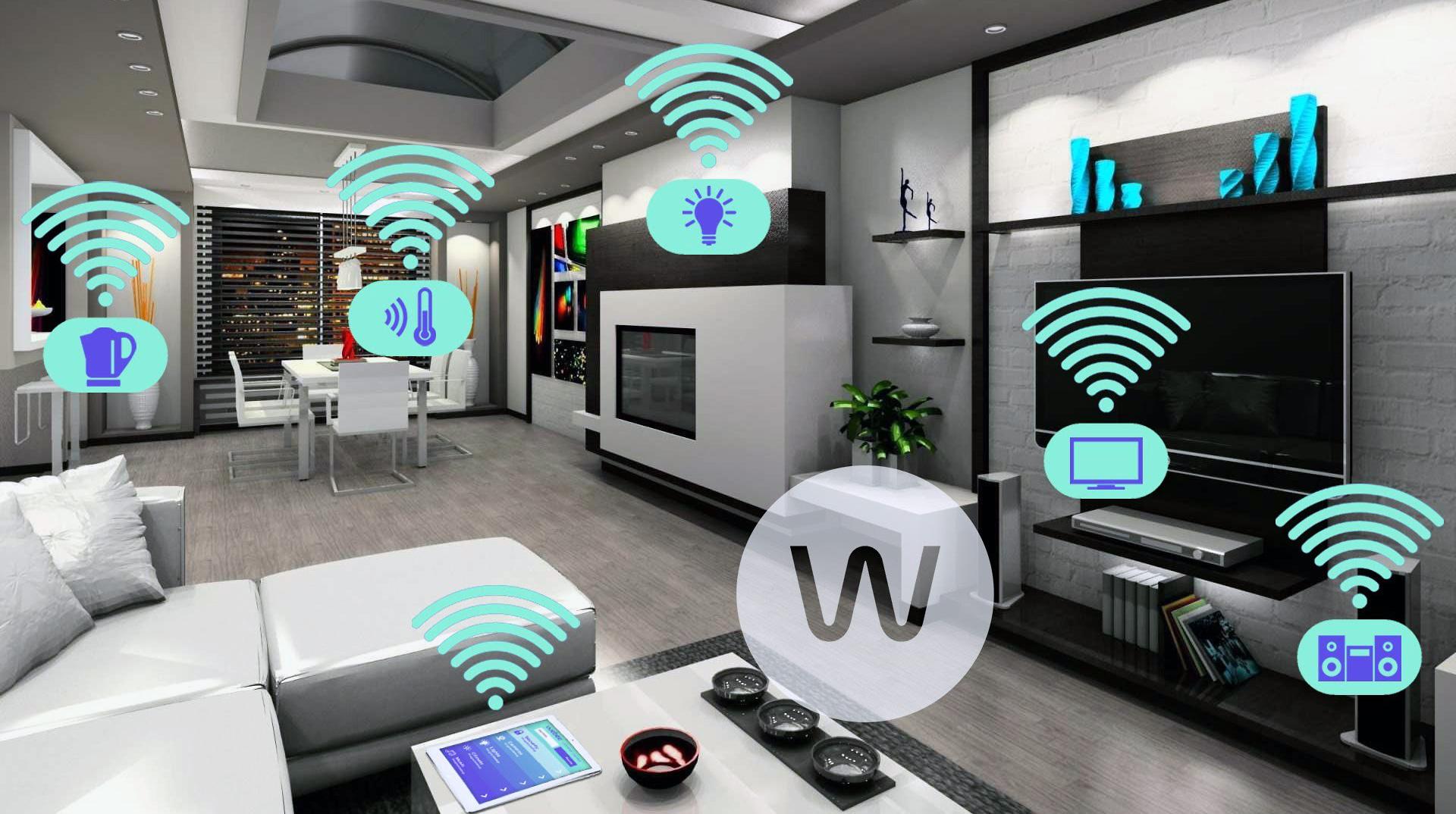TECHNOLOGY
We Need to Develop IoT standards and Protocols to Protect Smart Homes

Effective IoT standards and protocols are crucial for smart home safety today.
Devices are increasingly being targeted in cyberattacks, which have resulted in injury, harassment and invasions of user privacy. Security standards and protocols for IoT devices could help address the threats facing smart home product users.
Rising IoT Security Threats
Smart home devices have increased in popularity significantly over the last few years. They’re becoming more affordable and accessible. Plus, more people are buying homes, causing a national housing shortage in the U.K. Unfortunately, as smart home devices become more widely used, hackers are taking notice.
Over recent years, there have been more headlines about smart home devices being hacked, remotely accessed, or used to harass and terrorize people in their homes. For instance, Ring came under fire in 2020 when dozens of people reported these smart doorbells and security cameras being remotely controlled.
Victims of the hacks included babies, children and older adults. Hackers took control of the users’ smart home security cameras and used them to spy on the residents and even talk to them. Sadly, these cases are becoming more common.
Other hacks on smart home devices, mainly cameras, have resulted in dangerous and disruptive police raid pranks. In these cases, the hacker uses a smart home security camera to livestream a raid on an innocent homeowner after calling in a fake alert to law enforcement.
The Current State of IoT Standards and Protocols
Something must be done to ensure smart home devices are safe from cyberattacks. IoT items tend to get overlooked in cybersecurity efforts because they are not smartphones or computers. They might seem harmless enough, but they are still connected to the internet, which means they are at risk of being hacked.
Smart home cybersecurity is still a relatively new field, though. IoT standards and protocols are crucial to securing these devices. However, creating any standardization is a challenge when different device brands are not compatible with one another. Some of the biggest companies are coming together to change that, though.
Google, Amazon, Apple and other major smart home device manufacturers are forming a standardization platform known as Matter, which will establish some basic compatibility standards across all new smart home devices. Matter is the first major step toward smart home IoT standards and protocols. By committing to these standards, smart home device manufacturers will ensure their IoT devices are compatible with all other compliant items.
This is great news for consumers, but it could also help strengthen IoT security. Matter has developed a set of privacy principles that all member manufacturers must comply with. These guidelines include minimizing data collection and storage, layering authentication methods, and providing secure firmware updates. The basic standards established by Matter will also make it easier for developers to create effective cybersecurity applications for smart homes.
Strategies for Protecting IoT Devices
Matter standardization will go a long way toward improving compatibility between smart home devices and strengthening basic security. However, homeowners may wonder what they can do to protect their IoT devices now. Luckily, users can easily implement strategies to improve their smart home security.
Secure the Home Network
Homeowners should start by securing their home Wi-Fi network. This is especially important for anyone working remotely. Home network security must be a top priority for remote employees since they use their network to send and receive important and often sensitive information. Plus, these workers spend more time in their houses, which may lead them to use their smart home devices more often.
Similarly, always change the default password on smart home devices. Many IoT items ship with weak default passwords. These are not secure and are often shared among numerous units, making them highly vulnerable to hacking. Hopefully, IoT standards and protocols for security will change this trend in the future. Right now, homeowners must ensure all their smart home devices have strong, unique passwords and use multifactor authentication when possible.
Segment the Wi-Fi
Homeowners can secure their Wi-Fi networks by giving their network a long, complex password and using a high-quality router. It may also be a good idea to segment home Wi-Fi networks, which involves creating separate branches on the same system with isolated devices on each. People can use their router’s guest network for IoT devices. This way, if an IoT device is hacked, the attacker won’t have access to any PCs, phones or other items on it.
Know the Signs of a Hack
Hopefully, strong passwords and a secure home network will successfully keep hackers out of homeowners’ smart home devices. It is a good idea to be aware of the signs of a hacked device just in case. This is particularly important with smart cameras and doorbells, which are among the most high-risk targets for device hacks.
Signs of a compromised smart camera include an active recording light, higher than usual data traffic, unexplained sounds and random unit movement. Suspicious login activity on smart home apps is another dead giveaway. Sometimes hackers will even speak through hacked smart cameras. Homeowners should unplug their devices as soon as they notice any potentially suspicious activity.
Be Careful About Camera Placement
Lastly, homeowners must be mindful of where they put IoT cameras and speakers around their smart homes. These devices can be useful for things like keeping an eye on children or watching for burglary attempts. However, hackers tend to choose vulnerable targets like children and older adults to harass. For instance, in 2019, a hacker taunted a little girl through the smart camera in her bedroom, telling her he was Santa Claus.
It may be a good idea to avoid putting smart cameras and speakers in bedrooms and bathrooms. Until more reliably secure items are developed, it is better to be safe than sorry.
Improving IoT Standards and Protocols
Homeowners can use the strategies above to start protecting their smart home devices from hackers. However, in the long run, what smart homes really need are comprehensive IoT standards and protocols. Matter is a good starting point, but it will take large-scale action to ensure smart devices are using the best security tools and applications possible.
For instance, IoT security standards could require all devices to ship with unique, secure default passwords. Users should still set their own strong ones, but it is clearly not something many people are doing. They simply aren’t familiar with cybersecurity best practices, so manufacturers need to step up to help protect them.
Smart camera hacks seem to be one of the largest issues with device security, so these items should be a top priority in IoT standards.
For instance, maybe smart cameras could come with a feature that records video without any capability to stream it. It might also help to require multifactor authentication to view, stream, or otherwise access a smart camera or speaker. Similarly, smart device manufacturers could mandate users change their passwords regularly, which could help prevent stolen or compromised login credentials from being used to hack smart home devices.
Ultimately, it might take intervention by a federal organization or other authority to establish strict, universal IoT standards and protocols for smart device security. Some international organizations are already stepping up.
For example, the EU established a set of standards for consumer IoT devices in 2020 that applies to all member nations. Similarly, the International Standards Organization published IoT security and privacy guidelines in 2022, which can be accessed and used worldwide. In the U.S., the National Institute of Standards and Technology has also established a program to provide cybersecurity guidance for IoT devices.
Implementing Smart Home Tech Safely
Hackers increasingly target smart home technology as it becomes more popular. Compatibility between brands is a nice quality-of-life feature, but security needs to be the top priority for Matter and other smart home standards organizations. From collaborations among manufacturers to large-scale international standards, IoT devices need baseline security protocols to ensure people can use technology safely, today and into the future.
Source link

















You must be logged in to post a comment Login